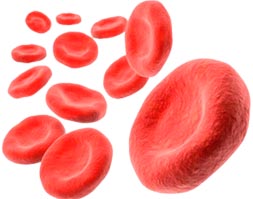Hemoglobin electrophoresis in children of carrier mothers with hemoglobinopathies SS and SC
Keywords:
SICKLE CELL ANEMIA, HETEROZYGOTE, DIAGNOSIS.Abstract
Introduction: sickle cell disease is one of the hemoglobinopathies of high frequency autosomal recessive inheritance in the world population. In Cuba, the screening is performed by means of the study of hemoglobin electrophoresis to all pregnant women and subsequently to the children of carrier mothers.
Objective: to describe the results of hemoglobin electrophoresis in children of carrier mothers with hemoglobinopathies SS and SC in Minas de Matahambre.
Material and Methods: a descriptive, cross-sectional and retrospective study was carried out on 59 children of mothers with hemoglobin S and C, underwent hemoglobin electrophoresis at birth in Minas de Matahambre between 2006 and 2016.
Results: the municipal frequency of AS hemoglobinopathies in children of pregnant women was 28.8%; the health area of Minas presented 20.3%, followed by Santa Lucia and Sumidero with 6.7% and 1.6% respectively. The frequency of hemoglobin C carriers was 5.08%. The male sex predominated in children with hemoglobin S and C, and only one female case without prior prenatal diagnosis was found to be ill (SS).
Conclusions: the municipal coverage of sickle cell anemia screening program, the frequency of hemoglobinopathies in children of mothers with hemoglobin S and C, their distribution by sex and health care districts were determined, which allows them to provide genetic counseling and follow-up.
Downloads
References
1. González R, Maza MÁ, Oliva Y, Menéndez R. Resultados del programa de prevención de hemoglobinopatías SS y SC. Revista de Ciencias Médicas de Pinar del Río, [Internet]. 2013 [citado 9 de mayo 2017]; 17(4): [aprox. 9 p.]. Disponible en: http://scielo.sld.cu/pdf/rpr/v17n4/rpr06413.pdf
2. Campos N, Ruiz Y, Calvo MM, Évora TM, Raymond H et al. Evaluación del programa de prevención de anemias por hematíes falciformes desde 1989 a 2013 en Guantánamo. Revista Información Científica, [Internet]. 2015 [citado 9 de mayo 2017]; 89(1): [aprox. 9 p.]. Disponible en: http://www.revinfcientifica.sld.cu/index.php/ric/article/view/266/583
3. Cuadra YA, Álvarez HG, Barroso N, Góngora A, Ferrer JJ. Hemoglobinopatía SS y SC en lactantes. Repercusión de una paternidad no responsable. Medisan, [Internet]. 2013 [citado 9 de mayo 2017]; 17(5): [aprox. 10 p.]. Disponible en:
http://scielo.sld.cu/scielo.php?script=sci_arttext&pid=S1029-30192013000500005
4. Bender MA, Douthitt G. Sickle cell disease. GeneReviews, [Internet]. 2014 [citado 8 de mayo 2017]; Disponible en: https://www.ncbi.nlm.nih.gov/books/NBK1377/
5. Turró A, García Y, Saavedra I. Resultados del programa cubano de prevención de anemia falciforme en la Isla de la Juventud. 2008-2012. REMIJ, [Internet]. 2013 [citado 8 de mayo 2017]; 14(2): [aprox. 17 p.]. Disponible en: http://remij.sld.cu/index.php/remij/article/view/71/150
6. Hernández Y, Suárez M, Rivera MC, Rivera VC. La genética comunitaria en los programas de diagnóstico prenatal. Revista de Ciencias Médicas de Pinar del Río, [Internet]. 2013 [citado 9 de mayo 2017]; 17(3): [aprox. 11 p.]. Disponible en: http://scielo.sld.cu/pdf/rpr/v17n3/rpr09313.pdf
7. Beltrán Y, Martín MR. Criterios de severidad de los pacientes con anemia falciforme según sus cuidadores. Panorama Cuba y Salud, [Internet]. 2011 [citado 9 de mayo 2017]; 6(Especial): [aprox. 5 p.]. Disponible en: http://www.redalyc.org/pdf/4773/477348946007.pdf
8. Pujadas X, Viñals LL. Enfermedad de células falciformes en el embarazo. Revista Cubana de Obstetricia y Ginecología, [Internet]. 2016 [citado 9 de mayo 2017]; 42(2): [aprox. 15 p.]. Disponible en: http://scielo.sld.cu/pdf/gin/v42n2/gin10216.pdf
9. Borrego D, Velázquez A, Pérez O, Torres JE. Caracterización clínico epidemiológica de niños tuneros con sicklemia. Revista Electrónica Dr. Zoilo E. Marinello Vidaurreta, [Internet]. 2015 [citado 9 de mayo 2017]; 40(5): [aprox. 5 p.]. Disponible en: http://www.revzoilomarinello.sld.cu/index.php/zmv/article/download/60/pdf
10. Svarch E, Marcheco B, Machín S, Menéndez A, Nordet I, Arencibia A, et al. La drepanocitosis en Cuba. Estudio en niños. Rev Cubana Hematol Inmunol Hemoter, [Internet]. 2011 [citado 9 de mayo 2017]; 27(1): [aprox. 16 p.]. Disponible en: http://scielo.sld.cu/pdf/hih/v27n1/hih05111.pdf
11.Guerra VS, Pérez G, Pérez MC, Pérez S, Frías MM. Resultados del programa de detección precoz de la anemia por hematíes falciformes en Mayarí durante 2002–2012. Correo Científico Médico de Holguín, [Internet]. 2015 [citado 9 de mayo 2017]; 19(4): [aprox. 10 p.]. Disponible en: http://scielo.sld.cu/pdf/ccm/v19n4/ccm02415.pdf
12.Taboada N, Gómez M, Algora AE, Arcas G, Noa MD, Herrera M. Pesquisaje prenatal de hemoglobinopatías ss y cc: 25 años de experiencia en la Provincia de Villa Clara, Cuba. Rev. Inv. Inf. Salud, [Internet]. 2015 [citado 9 de mayo 2017]; 10(24): [aprox. 9 p.]. Disponible en: http://www.revistasbolivianas.org.bo/pdf/riis/v10n24/v10n24_a06.pdf
13. Valdes Y, Pérez j, Fuentes I, Gámez G, Concepción A, Suárez B. Resultados del Programa de Prevención de Anemia Falciforme en el Centro Na¬cional de Genética Médica de Cuba (2008-2014). Rev Cubana Genet Comunit, [Internet]. 2016 [citado 9 de mayo 2017]; 10(1): [aprox. 5 p.]. Disponible en: http://www.bvs.sld.cu/revistas/rcgc/v10n1/060116.pdf

Published
How to Cite
Issue
Section
License
Authors who have publications with this journal agree to the following terms: Authors will retain their copyrights and grant the journal the right of first publication of their work, which will be publication of their work, which will be simultaneously subject to the Creative Commons Attribution License (CC-BY-NC 4.0) that allows third parties to share the work as long as its author and first publication in this journal are indicated.
Authors may adopt other non-exclusive license agreements for distribution of the published version of the work (e.g.: deposit it in an institutional telematic archive or publish it in a volume). Likewise, and according to the recommendations of the Medical Sciences Editorial (ECIMED), authors must declare in each article their contribution according to the CRediT taxonomy (contributor roles). This taxonomy includes 14 roles, which can be used to represent the tasks typically performed by contributors in scientific academic production. It should be consulted in monograph) whenever initial publication in this journal is indicated. Authors are allowed and encouraged to disseminate their work through the Internet (e.g., in institutional telematic archives or on their web page) before and during the submission process, which may produce interesting exchanges and increase citations of the published work. (See The effect of open access). https://casrai.org/credit/


